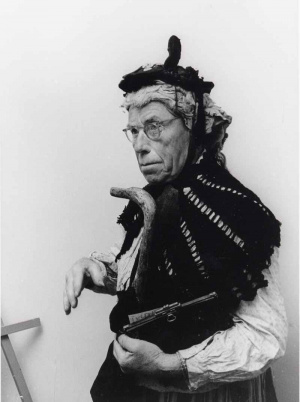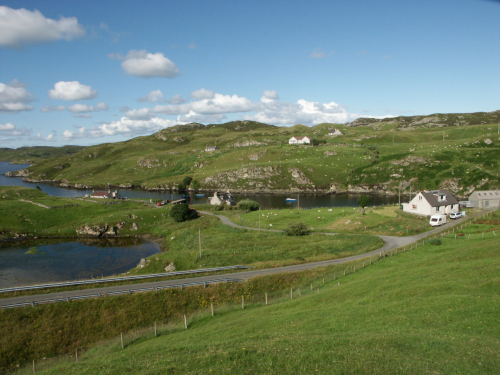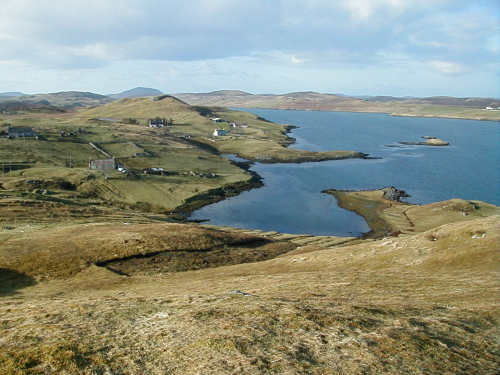The Press Gang at Keose circa 1802
‘Leac-na-Gillean‘ is remembered in the traditions of lochs as the geographical feature where the Press-gang put 32 young local men on board small boats against their will and ferried them out to a waiting warship that was hiding behind the Island of Tabhaid at the mouth of Loch Erisort. Subsequently 12 of them returned but 20 of them were never seen again. Leac-na-Gillean is at Swordale bay near Keose on the southern shores of Loch Leurbost. It was at Swordale Keose that the first Presbyterian Parish Church for the whole of the Parish of Lochs was built in 1724, and about the turn of the 18th/19th centuries, the church and manse buildings were moved up to the village of Keose. The new church stood where the Seaweed Factory was sited and the manse may still be seen at Glebe, Keose where it is used as a dwelling house. According to tradition the young men were lured into a trap under false pretences by causing them to enter the old parish church building at Swordale where the hated press gang were lying in wait for them, either within the church or nearby, ready to pounce on them and carry them away and enlist them in one of the armed services, probably the Navy seeing a warship was used.
Local tradition give two dates for this event 1802 and 1808 and furthermore it was said that it was during the ministry of Rev. Alexander Simpson the Parish Minister who was at Lochs from 1793 to 1830 which was during the time of the Napoleonic Wars, that the young men were taken. One source give the dates of the building of the new church and manse as 1796 for the church and 1800 for the manse, but we have seen slightly later dates given, 1808 seems rather late as the date of the Press Gang, as the new church was probably in use by then. On the other hand the old thatched church might have been used on occasion as well.
It is implied that Rev. Alexander Simpson was involved in the luring of the young men to the church and that whiskey played a part, but we would expect folk-lore to add colour to the event and no one knows what, if any part the well known minister played in the episode.
A late Crossbost Free Church Minister seemed to be well aware of the details of the event, but unfortunately we do not know if he could identify any young men that were involved in the event. Some Keose sources are inclined to think that possibly some or all of the men were in the North Lochs area rather than the Kinloch area.
We would be grateful for any more information about the 32 young men.


